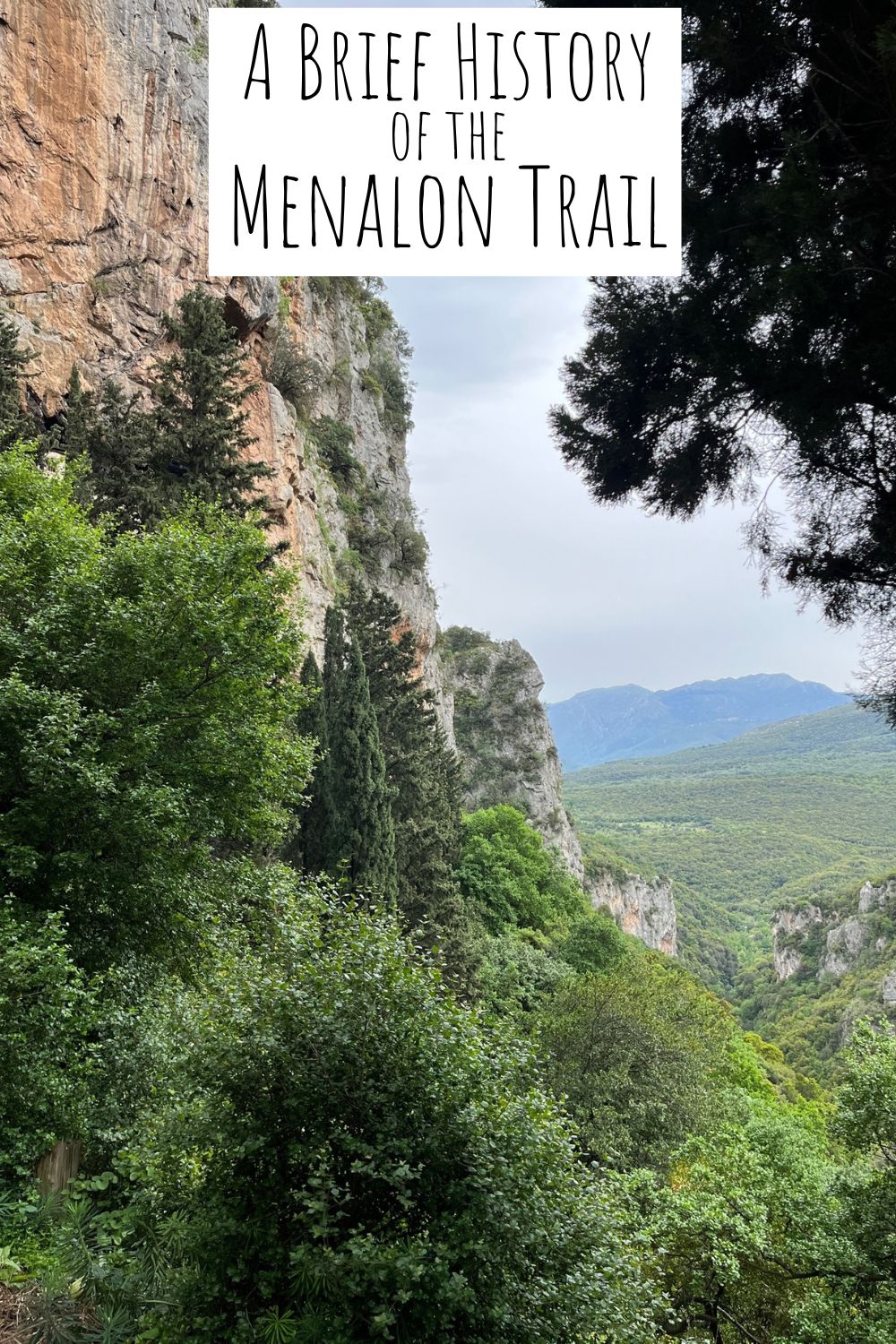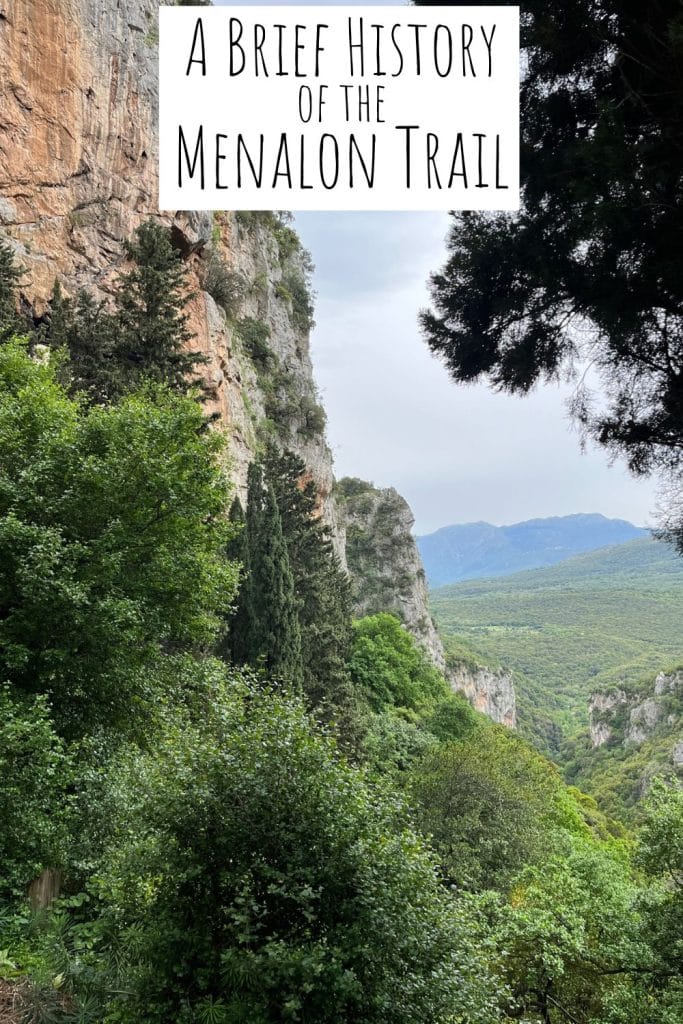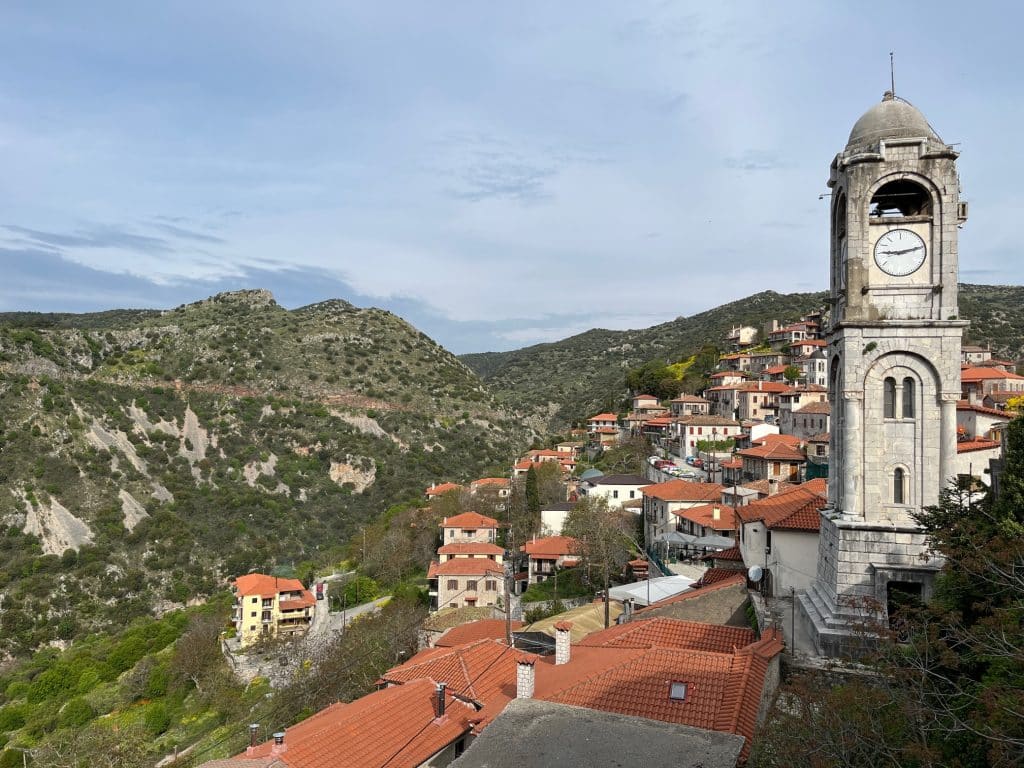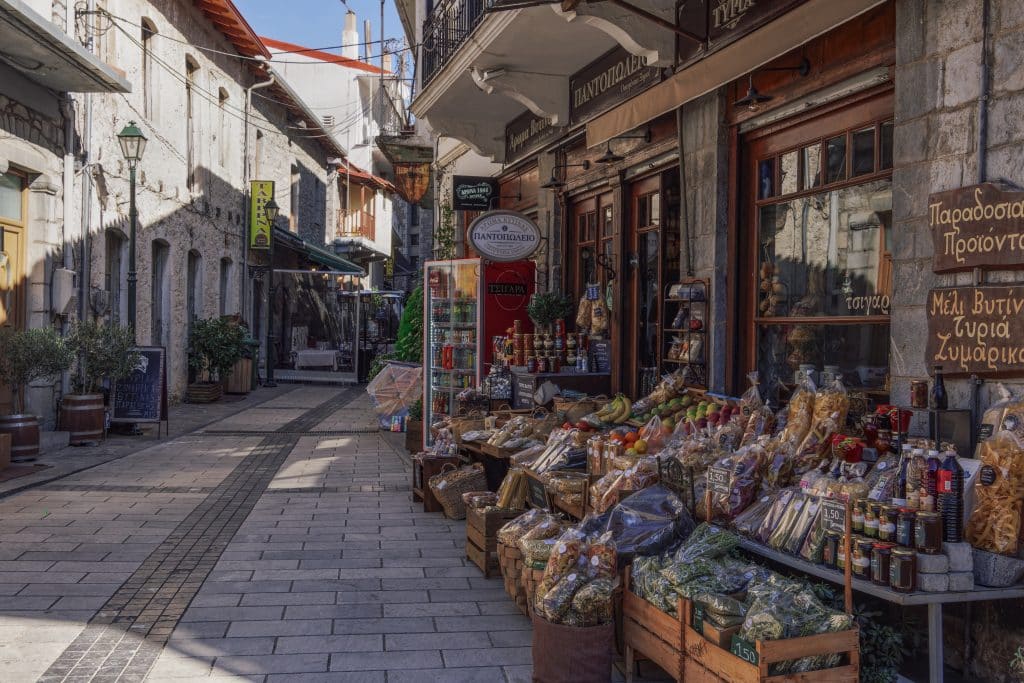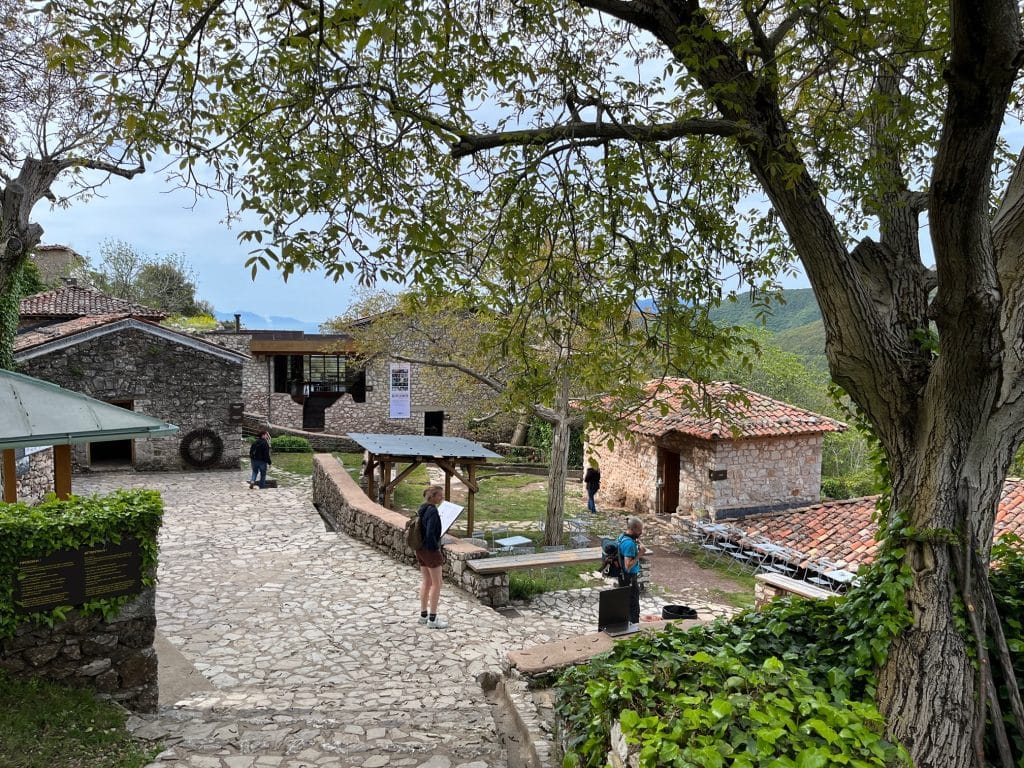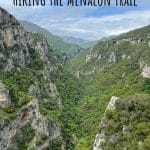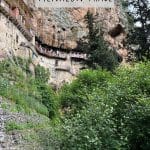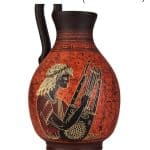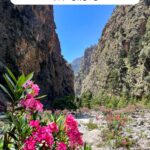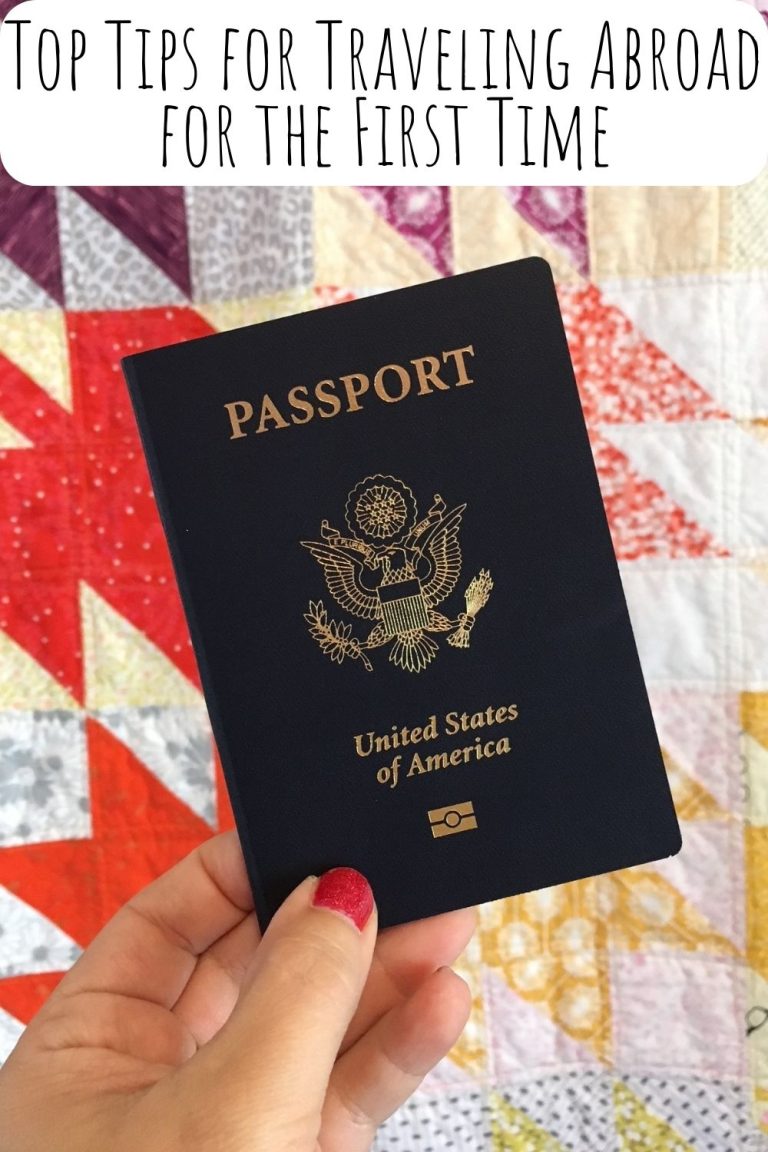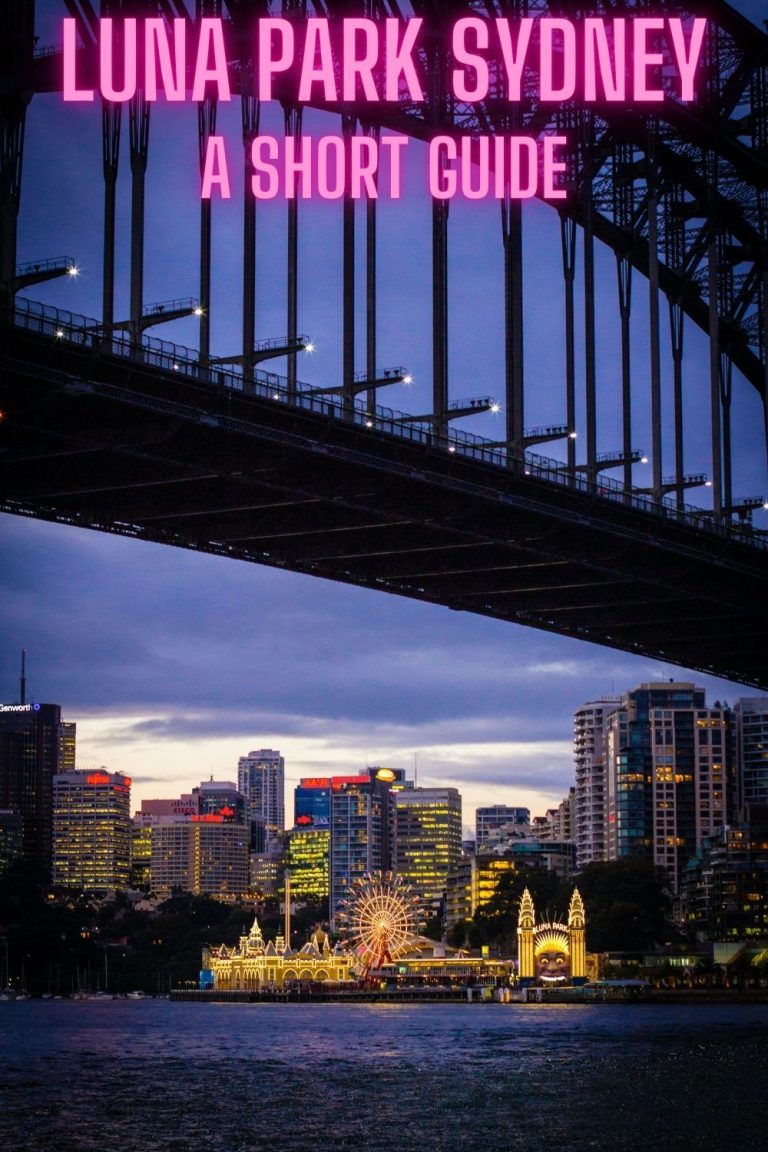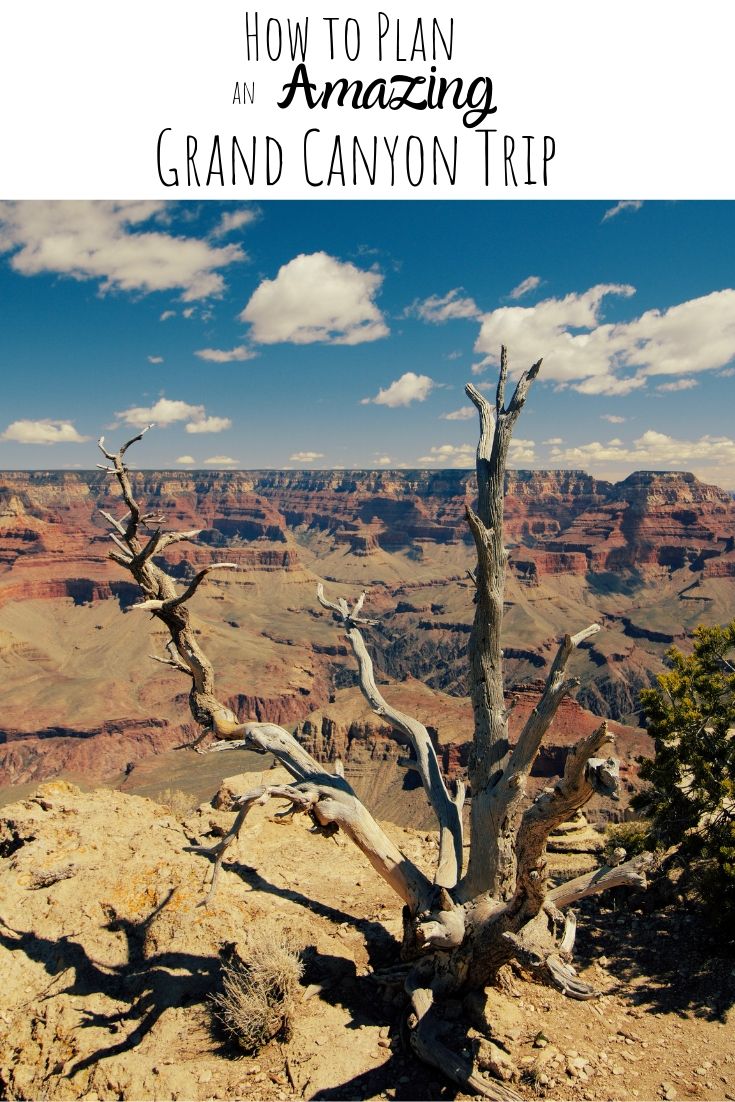A Brief History of the Menalon Trail
Being able to hike a portion of the Menalon Trail during my recent trip to Greece is an experience I’m not going to forget. Not only was the hike one of the most gorgeous I’ve ever encountered, it was also one of the most interesting. You’re hiking through actual history, both with the trail itself and what you encounter along the way. This brief history of the Menalon Trail will give you an overview of how it came to be, its importance to the area, and how it is used today.
How and When the Menalon Trail Started
The Menalon Trail is found in Arcadia, deep in the Peloponnese region of Greece. It is in the Gortynian Mountains and follows the Lousios River gorge, West Menalon, and the Mylaonta River valley. The trail itself dates back to the 16th century in its most simple form. Over generations, mule trails formed as people needed ways to safely travel between monasteries and villages.
In more recent years, the mule trails were connected to form a 75 km trail through nine different villages and was given its name as a way to invite others in to experience the beauty and culture of the region. Since then, the Menalon Trail has become known as one of Europe’s most beautiful hiking trails.
Towns and Monasteries Along the Menalon Trail
The first route begins in Stemnitsa and takes you first to the Prodromos Monastery. On your way there, you’ll encounter the church of the Transfiguration of Christ and the incredible view of the Lousios Gorge. After visiting the Prodromos Monastery, you’ll traverse the gorge on your way to the second and third monasteries, the Old Philosophou Monastery followed by the New Philosophou Monastery, founded in 963 and 1691 respectively. You can read a bit more about the monasteries here.
Dimitsana
The next town you come to will be Dimitsana, known for its water powered mills. Not far out of Dimitsana, you’ll come across the church of St. Paraskevi. Here you’ll have gorgeous views of the Lousios River median basin and the Dimitsana, Paliochori, and Zatouna settlements popping up among the wooded landscape. Continuing on, the only landmark you’ll be able to clearly see will be the monastery of St. Apostoli, related to the Emyalon Monastery. The well marked path will lead you into the third town of Zigovisti.
Zigovisti and Elati
The path between Zigovisti and Elati has some steep sections and takes you to the highest peak on the Menalon Trail. You’ll start off passing Agios Ioannis, an old church, and at the end you’ll run into the Zoodochas Pigi Chapel. This path will take you through ravines, around springs, over plateaus, and within view of fountains finishing this route in Elati, a mountain settlement.
Elati
Since Elati is up in the mountains, the next path descends to the Mylaonta River riverbed on your way to Vytina. Surprisingly, you won’t find any churches or monasteries on this leg of the trail. You will come across a few fountains and bridges and have beautiful views of the local vegetation. The path is well marked and consists of both plain and paved parts that will take you into the central square of the village of Vytina. This is an ideal place to rest and replenish your provisions, as Vytina is the head village in the area, supplying all the smaller areas around it.
Vytina and Nymphasia
The path between Vytina and Nymphasia starts with asphalt then transitions to a path that will take you toward the Mylaonta River where you’ll find Mavra Litharia, a huge boulder in the riverbed that the stream has divided over time, creating a short but amazing gorge. You’ll continue descending to the Tzavarenas’ bridge. You’ll gain altitude heading through a rocky landscape toward the village of Nymphasia.
Nymphasia
Nymphasia will connect you to Magouliana through various wooded areas. You’ll encounter the Kernitsas Monastery, one of the oldest monasteries of Gortynia. You’ll also see a few springs along the way. This part of the trail is rather difficult due to the steep slopes in the latter part, but eventually you will come across Magouliana. For those keeping track, Magouliana is the seventh town on this trail so far.
Magouliana
Heading out of Magouliana, you’ll encounter some incredible views at an intersection that can take you to Lasta (not our next destination), then you’ll descend on your way toward the Mara Sanitorium. This old sanatorium was built in the 1920’s, but has since been abandoned. You’ll also come across the St. Pantes church. Keep on following the path and you’ll eventually make it to Valtesiniko, a mountain village. This is the eighth destination and one that is large enough to provide many restaurants and accommodation options.
Valtesiniko to Lagkadia
From Valtesiniko to Lagkadia, you’ll see a school built from stones, a Byzantine fortress, St. Triada (a small country church), some springs, a wooded ridge, a meadow, concluding at a war memorial in Lagkadia.
Traveling the 75 km trail between these nine villages on the Menalon Trail in Arcadia in the Peloponnese is the perfect way to not only view Greek monasteries and churches, traverse a path that donkeys trampled down a thousand years ago, and visit some wonderfully quaint villages, but to observe the unique and natural beauty of inland Greece in a truly Greek manner.
Points of Interest
Many of the villages along the Menalon Trail have specific trades they flourish in. The starting village of Stemnitsa is known for its goldsmiths and silversmiths. They enjoy specializing not only in crafts and jewelry, but fine kitchenware.
Dimitsana
Dimitsana is known for its mills, powered by the water that flows through the village. In particular, a gunpowder mill was essential during the revolution (now the Open-Air Water Power Museum). More can be learned about this rich history at the town library, which also houses a museum.
Zygovisti
Zygovisti boasts of traditional charm and revolutionary pride while Elati and Vytina are tranquil and small villages. Magouliana is a village of loggers, while Valtesiniko is a village of excellent woodcarvers and Lagkadia is known for its stone builders. Each village has an individual charm, making each stop along the way unique and memorable in its own way.
History and Culture
Beyond the villages, you’ll find areas of historic and cultural interest as well. The Prodromos Monastery was built into a cliff that overlooks the Lousios Gorge, and the Kernitsas Monastery was built into a boulder and boasts of a legendary cave where an icon of the Virgin Mary was possibly discovered.
Don’t miss the historic stone bridges along the way that cross rivers along the path. The Zarzi bridge forms a high arch that crosses the Milaontas River near Vytina. There’s also a stone bridge boasting three arches that has been largely incorporated into the landscape near Dimitsana.
The Work Behind Getting the Menalon Trail to Where It Is Today
With the help of some Eastern Gortynia volunteers, the support of the Municipality of Gortynia and the Region of Peloponnese and the Club of Arcadian Mountaineers and Ecologists, The Menalon Trail is a magnificent hiking experience.
Being the first trail in Greece to be certified by ERA (European Ramblers Association), it has been incorporated into the Greek Paths of Culture and placed among the Leading Quality Trails – Best of Europe. To earn these certifications, each part of the Menalon Trail has been tested by hiking inspectors to ensure their safety and accessibility.
ERA certification ensures some complexity of varying landscapes, infrastructures along the way, as well as route character. They also take into consideration careful maintenance for the trail and environmental protection. All of these factors together ensure that the Menalon Trail is well marked, safe to traverse for hikers and trekkers, and retains the natural beauty of the Arcadian landscape.
How is the trail used today?
The Menalon Trail is the perfect way for anyone from beginner hikers to professional outdoors people to truly experience the beauty in the terrain of Greece and the culture in the smaller and lesser-known villages. It encourages tourism for an area of Greece that is off the beaten track. The Menalon Trail also protects the environment in this mountainous region. In order to maintain the natural landscape and the honor as one of Europe’s most beautiful hiking trails, great care must be taken to keep the path visible, but to also keep the landscape untouched. It’s not an easy balance to maintain, but
